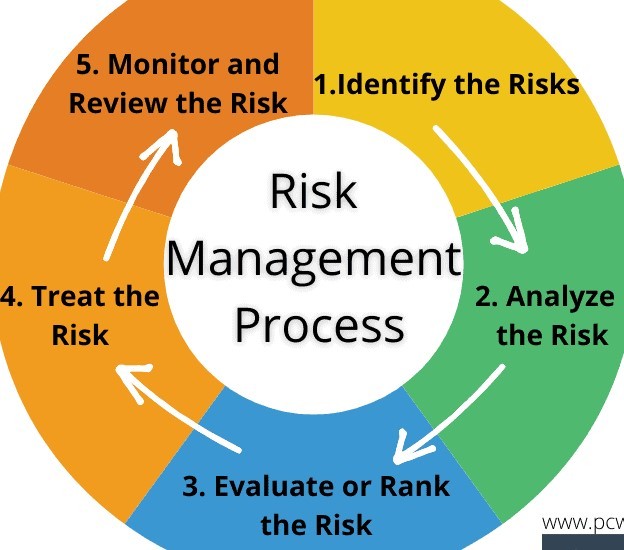Discovering the Significance of Risk Management for Effective Decision-Making Methods
In the complex globe of business, Risk Management emerges as a vital aspect in the decision-making procedure. The capacity to determine prospective hazards and opportunities, and plan as necessary, can lead to the difference between success and failure.
Understanding the Idea of Risk Management
Risk Management, a critical element in decision-making, is typically misunderstood or oversimplified. Normally, it refers to the identification, assessment, and prioritization of dangers to lessen, keep an eye on, and regulate the probability or impact of unfortunate occasions. It's not merely about preventing negative end results, yet likewise about recognizing potential possibilities. Risk Management involves disciplined and organized strategies, making use of information and insightful analyses. It calls for a detailed understanding of the company's context, purposes, and the prospective risks that can obstruct them. From financial unpredictabilities, legal liabilities, critical Management errors, to crashes and natural disasters, it resolves different dangers. Significantly, effective Risk Management is not stationary; it's a continuous, progressive process that evolves with transforming scenarios.
The Duty of Risk Management in Decision-Making Processes
In the world of critical preparation and company operations, Risk Management plays an indispensable duty in decision-making procedures. Risk Management hence comes to be an essential device in decision-making, assisting leaders to make informed selections based on a comprehensive understanding of the threats entailed. Risk Management offers as an essential element in the decision-making processes of any kind of company.

Exactly How Risk Management Improves Strategic Preparation
In the context of tactical preparation, Risk Management plays a crucial duty. Starting with the recognition of possible dangers, it even more reaches the execution of Risk mitigation measures. The duty of Risk Management is not fixed however dynamic, as it demands constant monitoring and adjusting of techniques.
Identifying Possible Risks

Applying Risk Mitigation
Risk mitigation strategies can vary from Risk avoidance, Risk transfer, to take the chance of reduction. Each strategy needs to be tailored to the specific Risk, considering its potential effect and the organization's Risk tolerance. Reliable Risk reduction requires a deep understanding of the Risk landscape and the potential influence of each Risk.
Surveillance and Adjusting Strategies
Though Risk mitigation is an important action in calculated preparation, constant surveillance and modification of these strategies is just as essential. This recurring process enables companies to identify brand-new risks and reassess existing ones, making certain the executed methods continue to be efficient in the ever-changing organization environment. It likewise gives an opportunity to examine the success of the Risk Management steps, permitting changes to be made where required, additional boosting strategic planning. Effective surveillance and adjustment need using analytics and essential efficiency indications (KPIs) to gauge effectiveness. These tools offer useful data-driven understandings that can inform tactical decision-making. Consequently, surveillance and adjusting Risk Management techniques is an essential part for improving an organization's resilience and tactical planning.
Case Studies: Successful Risk Management and Decision-Making
In the globe of service and financing, successful Risk Management and decision-making typically offer as the columns of flourishing enterprises. One such entity is a multinational oil business that mitigated economic loss by hedging against varying oil rates. In another instance, a technology startup prospered by identifying and accepting risky, high-reward methods in an unpredictable market. A worldwide financial institution, confronted with regulatory uncertainties, effectively navigated the scenario via proactive Risk analysis and vibrant decision-making. These instances highlight the worth of sharp Risk Management in decision-making procedures. It is not the lack of Risk, yet the Management of it, that commonly separates successful business from not successful ones. These situations highlight the important function of Risk Management in tactical decision-making. importance of risk management.
Tools and Methods for Effective Risk Management
These devices, such as Risk registers and warm maps, help in recognizing and assessing potential risks. Risk action techniques, an essential component of Risk Management, involve accepting, avoiding, transferring, or mitigating threats. With these devices and strategies, decision-makers can browse the complex landscape of Risk Management, thus assisting in helpful site notified and efficient decision-making.
Future Patterns in Risk Management and Decision-Making Strategies
As we check out the vast landscape of Risk Management, it comes to be apparent that the methods and devices made use of today blog will certainly proceed to develop. The principle of Risk culture, where every member of a company is mindful and involved in Risk Management, will certainly gain a lot more prestige. These trends declare an even more aggressive and you can check here inclusive approach in the direction of Risk Management and decision-making.
Verdict

Risk Management therefore ends up being an important tool in decision-making, helping leaders to make enlightened options based on a detailed understanding of the dangers involved. Risk mitigation techniques can range from Risk evasion, Risk transfer, to risk decrease (importance of risk management). Efficient Risk reduction needs a deep understanding of the Risk landscape and the possible effect of each Risk. Risk action techniques, a key component of Risk Management, entail accepting, avoiding, moving, or mitigating risks. The principle of Risk society, where every participant of an organization is aware and entailed in Risk Management, will obtain a lot more prominence